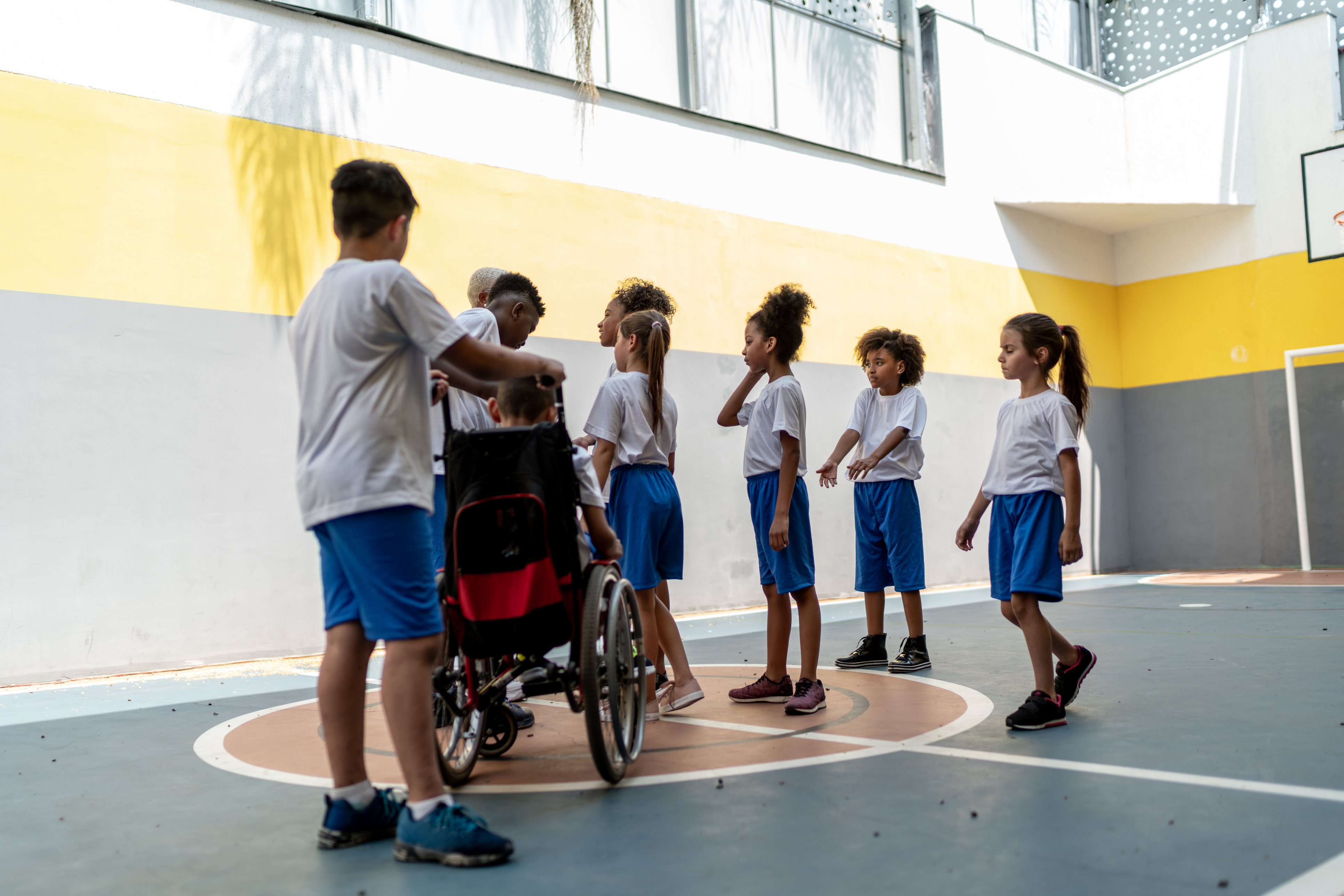
Note: Portions of this blog first appeared in an earlier Ophea blog, “Introducing Culturally Responsive and Relevant Pedagogy in Health and Physical Education”, published on February 13th, 2024. For more information about Culturally Responsive and Relevant Pedagogy and about the overall resource please refer to our prior blog post.
Ophea is proud to announce an exciting new update to our Culturally Responsive and Relevant Pedagogy in Health and Physical Education resource: model lesson plans that embed Culturally Responsive and Relevant Pedagogy (CRRP) and disability-centred movement principles in the lesson itself.
What is Culturally Responsive and Relevant Pedagogy (CRRP)?
CRRP refers to a student-centred, asset-based pedagogical approach that seeks to empower every student in their own learning experiences by building bridges of meaningfulness between school and culture. At the core of CRRP approaches is the belief that every student is capable of achievement. The educator’s role is to identify the opportunities for connection, authentic representation, and student success that arise precisely because of unique differences that result from a diversity of backgrounds (cultural, socio-economic, religious, etc.) and perspectives. Educators that use CRRP approaches appreciate the social identities and backgrounds of their students as assets, not limitations.
CRRP goes beyond simple acknowledgement of the fact that all students enter the classroom with a unique identity and lived experience; it fosters learning environments that proudly reflect this truth and demonstrate to every student that they are a valued, respected member of their school community. 1 Fundamentally, CRRP can be understood as a way of being in relationship with the learners in your classroom. When educators commit to understanding the unique group of individuals that make up their class, they can co-create deep mutual respect between all classroom members. CRRP provides a lens through which the learning process can be leveraged to enable opportunities for every student to thrive.
New Addition! Sample Lesson Plans with Embedded CRRP
We’re thrilled to announce the addition of grade-specific, comprehensive lesson plans to our Culturally Responsive and Relevant Pedagogy in Health and Physical Education resource. In addition to using them directly in their classrooms, educators can also reference these lesson plans to familiarize themselves with CRRP and disability-centred movement principles and how they might manifest in inclusive lesson planning. Over time, educators can increase their capacity to independently integrate these inclusive strategies in their own lesson planning and pedagogy.
The identified strategies in the “CRRP and Disability-Centred Movement Strategies Embedded in the Lesson” section are embedded and modelled in the lesson. However, these are not the only considerations when programming for diversity and inclusion; educators are encouraged to explore the other sections of Culturally Responsive and Relevant Pedagogy in Health and Physical Education and Ophea’s Disability-Centred Movement: Supporting Inclusive Physical Education resource for further learning about embedding CRRP and disability-centred movement approaches into their existing practice.
Regardless of educators’ previous experience with principles like CRRP, these sample lesson plans are intended to focus their attention on the ways that inclusive planning principles can support meaningful physical education experiences. Implementing new pedagogies takes time, practice, and effective learning tools; Ophea is pleased to support educators as they increase their capacity to offer affirming, high-quality learning experiences for every student.
Each sample lesson plan incorporates the following key components:
- Considerations for Lesson Planning: includes components to carefully think through to guide planning for diversity and inclusion. For example, locations in which the activity will occur, curriculum strand and topic, key considerations based on identified student strengths and needs, and available support. By modeling the thought process behind understanding a student’s unique context, strengths, and needs, and supplying examples of specific considerations that might support a more inclusive environment, this section encourages educators to get curious about how lesson design can create safer learning environments where meaningful experiences can occur.
- Lesson Design:
- Three-Part Lesson Design: illustrates relevant CRRP teaching and learning strategies, as well as instructional, environmental, and assessment strategies for students with disabilities to maximize student engagement in inclusive and meaningful physical education experiences.
- Ideas for Extension: includes equipment options, various group sizes and configurations, variations on ways to play, and extensions for continued learning to maximize the challenge, engagement, and participation of every student in a meaningful way.
- Sample Teacher Prompts: includes question prompts to help students make connections to skills they are developing for lifelong healthy, active living, and to empower students in their learning experience by making meaningful connections between school, culture, and their lived experiences. Sample student responses are also included.
- CRRP and Disability-Centred Movement Strategies Embedded in the Lesson: highlights the various components embedded in the lesson design and instruction to model both a CRRP and disability-centred movement approach; addresses identified student considerations to support their strengths and needs, to ensure all aspects of the learning are accessible, and that all students feel respected, valued, and included.
If you’re interested in expanding your understanding of leveraging CRRP and disability-centred movement principles in lesson planning, explore the new lesson plans today.
Remember, these lesson plans are just a starting point! For more information about CRRP and other inclusive planning strategies, explore the full Culturally Responsive and Relevant Pedagogy in Health and Physical Education and Disability-Centred Movement: Supporting Inclusive Physical Education resources.
Bibliography
1. (2011, Winter). Toward a conceptual framework of culturally relevant pedagogy: An overview of the conceptual and theoretical literature. Teacher Education Quarterly, 65–84. Brown-Jeffy, S., & Cooper, J.E
